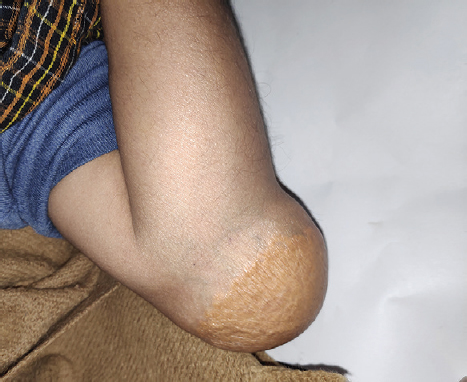Translate this page into:
Tendon xanthomas in familial hypercholesterolaemia
*For correspondence: bharathg531@gmail.com
-
Received: ,
This is an open access journal, and articles are distributed under the terms of the Creative Commons Attribution-NonCommercial-ShareAlike 4.0 License, which allows others to remix, tweak, and build upon the work non-commercially, as long as appropriate credit is given and the new creations are licensed under the identical terms.
This article was originally published by Wolters Kluwer - Medknow and was migrated to Scientific Scholar after the change of Publisher.
A 24 yr old male† presented to the department of Emergency Medicine, All India Institute of Medical Sciences, New Delhi, India, in January 2019, with complaints of typical anginal chest pain and dyspnoea for two days. He was a known case of familial hypercholesterolaemia and had undergone coronary artery bypass grafting in 2002. He also underwent aortic valve replacement for supra-valvular aortic stenosis in 2013. On examination, the patient had bilateral xanthelasma (Fig. 1) and multiple tendon xanthomas (Figs 2-4). Cardiovascular examination revealed metallic click. Electrocardiogram revealed ST depression with T wave inversion in the lead I, II, aVF, V3 to V6. Initial troponin was 0.88 μg/l and repeated troponin was 0.95 μg/l. Percutaneous coronary intervention was done to the radial graft, which had significant osteoproximal disease. He was detected to have PCSK9 (Proprotein convertase subtilisin- like/kexin type 9) mutation. He was advised PCSK9 inhibitor but did not consent. He was discharged on atorvastatin and ezetimibe.

- Bilateral xanthelasma.

- Xanthomas over both elbow joints (anteroposterior view).

- Xanthomas over the left elbow joint (lateral view).

- Bilateral extensor tendon xanthomas of the hand.
This case highlights the importance of clinical examination to provide early clue to underlying aetiology of a premature coronary event.
Conflicts of Interest: None.





